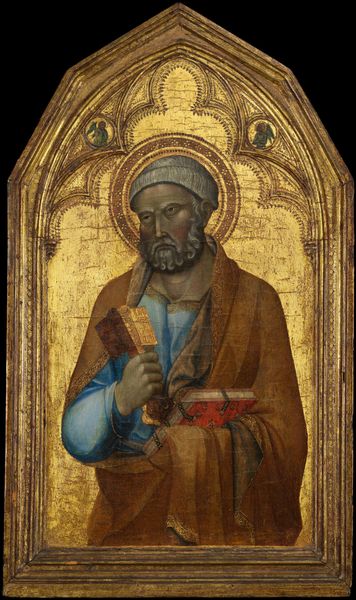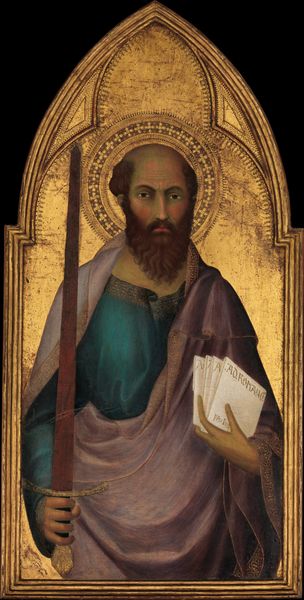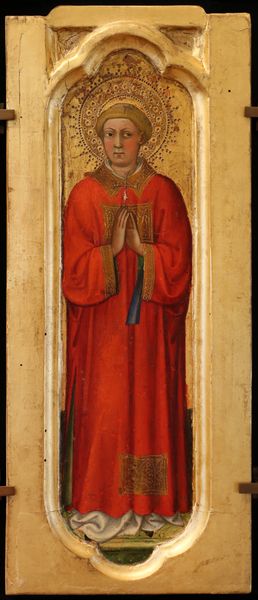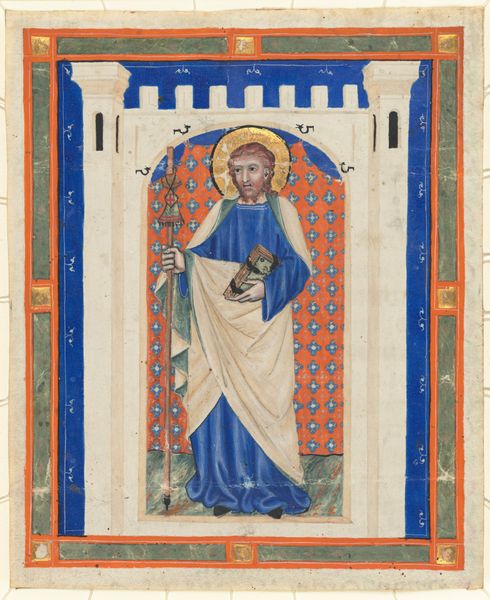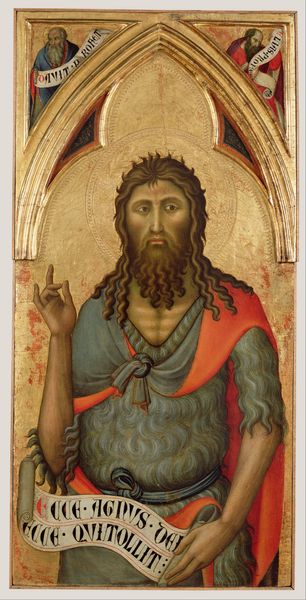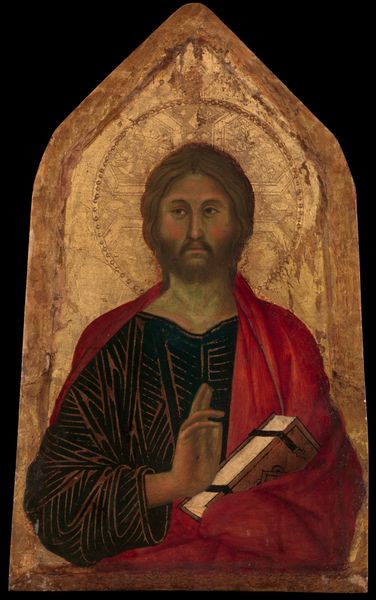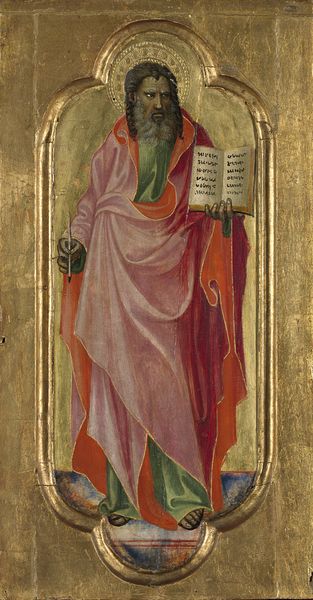
tempera, painting
#
portrait
#
medieval
#
tempera
#
painting
#
figuration
#
oil painting
#
history-painting
#
italian-renaissance
Dimensions: Overall, with engaged frame, 18 1/8 x 10 3/4 in. (46 x 27.3 cm)
Copyright: Public Domain
Curator: Standing before us is “Saint Romuald,” a tempera on panel painting, attributed to Pseudo-Palmerucci, dating back to 1320-1330. It resides here at The Metropolitan Museum of Art. Editor: The aged paint and panel certainly make their presence known; all those age-related cracks create such a visceral sense of history and time. Curator: Indeed, the visible signs of age become part of the artwork’s meaning, carrying the weight of cultural memory. Note how the halo, rendered in tooled gold leaf, evokes a sense of timeless holiness contrasting with earthly decay. The artist sought to convey Romuald’s saintly status, an individual known for seeking penitence through solitary retreat, breaking with worldliness. Editor: But isn't that "timelessness" produced very materially? Consider the economic conditions that allowed for the tooling of precious metals or for pigment procurement during the 14th century. The cost of materials and the intensive labor involved would immediately put it within reach of the wealthy families connected to the church. And that labor—someone painstakingly preparing the panel, mixing tempera… These actions reinforce existing power structures, wouldn’t you agree? Curator: A powerful point! Yet even with material constraints, the enduring symbol of the book, held gently in Romuald’s hands, offers access to knowledge and spirituality—themes relevant even now. The subject's very human gaze is both inviting and contemplative. The artist provides Romuald with access to humanity by having the sitter engage directly with the audience. Editor: The texture alone keeps me riveted. I find it captivating how tempera yields such a matte finish, compared to the sheen of later oil paints. Tempera’s quick-drying properties required meticulous application. I find myself thinking about Pseudo-Palmerucci’s labor—a human endeavor across generations. Curator: The enduring power of visual symbols and their reinterpretation throughout time. The dialogue that the "Saint Romuald" portrait encourages with us and our understanding of this Italian saint, 700 years later! Editor: The power resides also in the physical evidence, the aging that gives the materials an identity. Knowing how and from where those colors come from only enriches that.
Comments
No comments
Be the first to comment and join the conversation on the ultimate creative platform.


